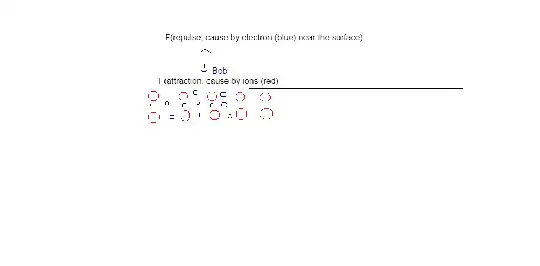We consider an electron "Bob" trying to escape from a metal surface as shown (blue circles represent electrons, red circles represent ions). I know that Bob can't leave the metal surface is because the attraction due to the ions is greater than the repulsion due to the electrons below. My question is: why F(attraction, by ions near the surface) is greater than F(repulse, by electrons)? Thank you!
2 Answers
Why don't you fly apart into your constituent atoms? The same logic applies: the nuclei repel each other, as do the electrons. Why does the attraction between the nuclei and electrons dominate?
One way to rationalize this observation is to understand that the nuclei and electrons can arrange themselves so that, on the average, the nuclei are closer to the electrons and the electrons are closer to the nuclei. A two-dimensional example of that kind of pattern is a chessboard: the white squares are surrounded by black squares and vice-versa.
In such an arrangement, the electrons are more attracted to the nuclei in their neighborhood than they are to the electrons farther away. That keeps them confined to the material.
A more sophisticated story requires quantum mechanics, but this is the essence of it.
- 22,119
Classically, the charge near the surface will induce a localised charge distribution of opposite sign that at small enough distance will result in an attractive force. This is show in Jackson, Classical Electrodynamics, (pages 60 to 62 in the third edition), for a charged sphere and a point charge of the same sign.
Jackson goes on to say:
This example exhibits a general property which explains why an excess of charge on the surface does not immediately leave the surface because of mutual repulsion of the individual charges. As soon as an element of charge is removed from the surface, the image force tends to attract it back. If sufficient work is done, of course, charge can be removed from the surface to infinity. The work function of a metal is in large part just the work done against the attractive image force in order to remove an electron from the surface.
- 906
